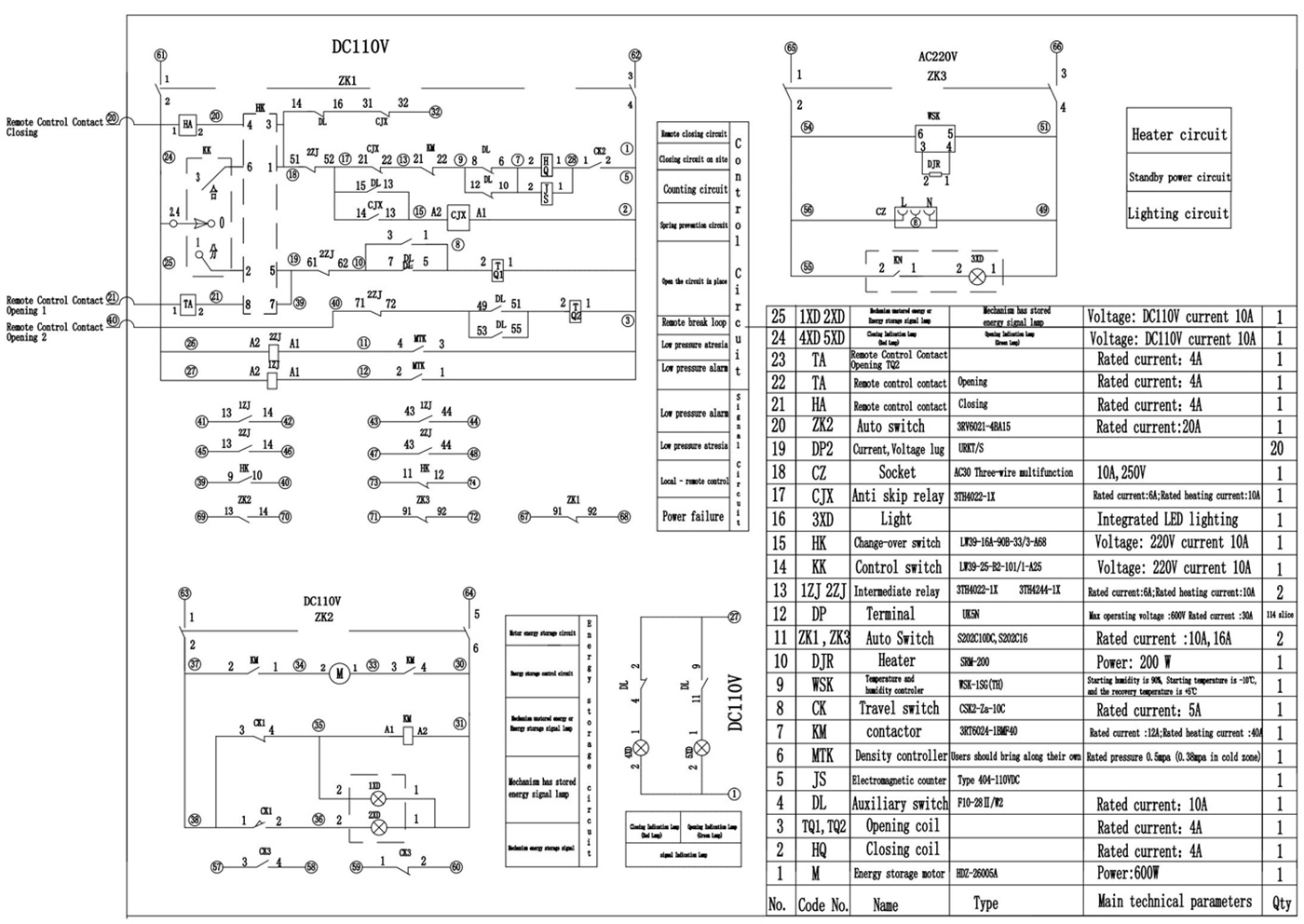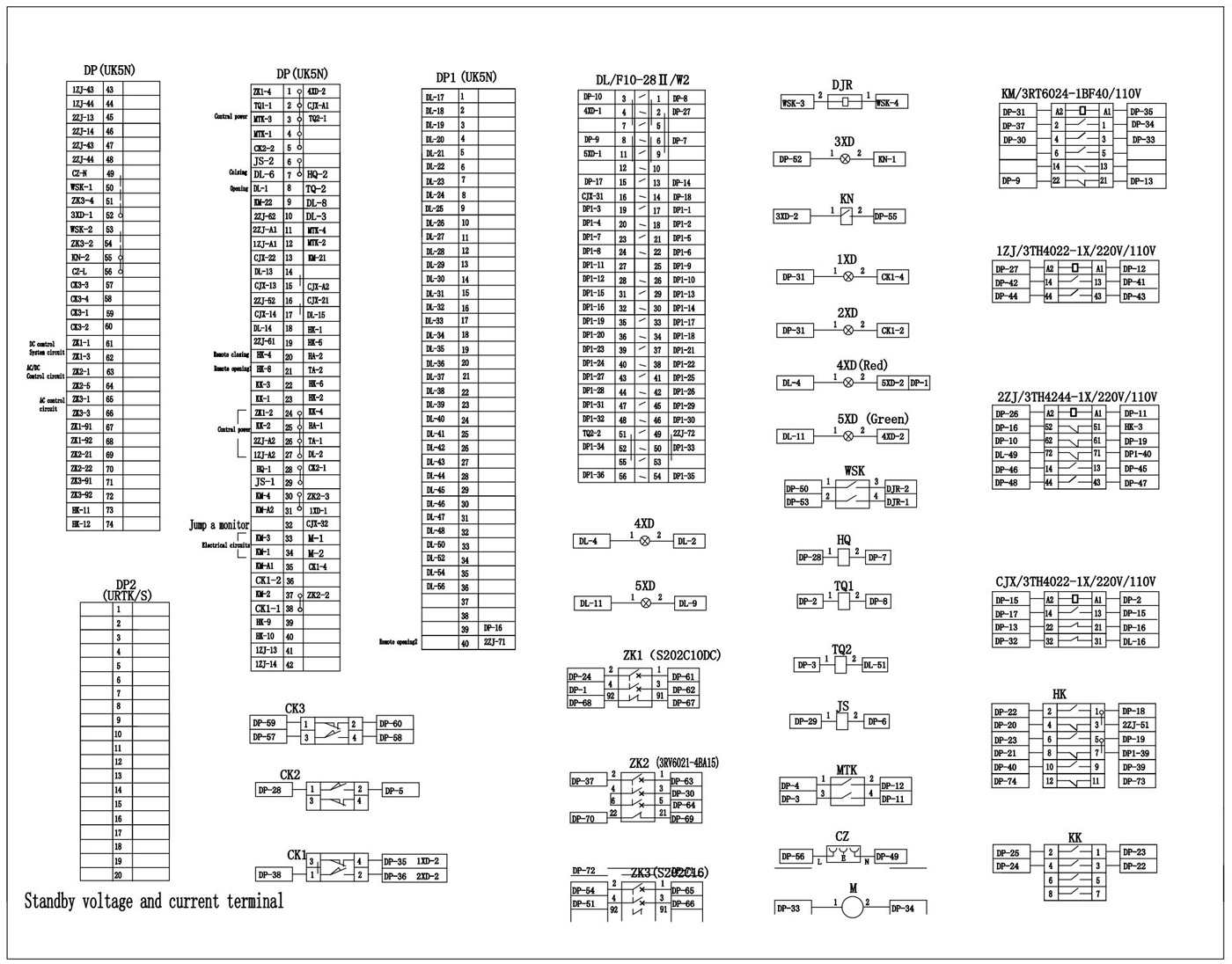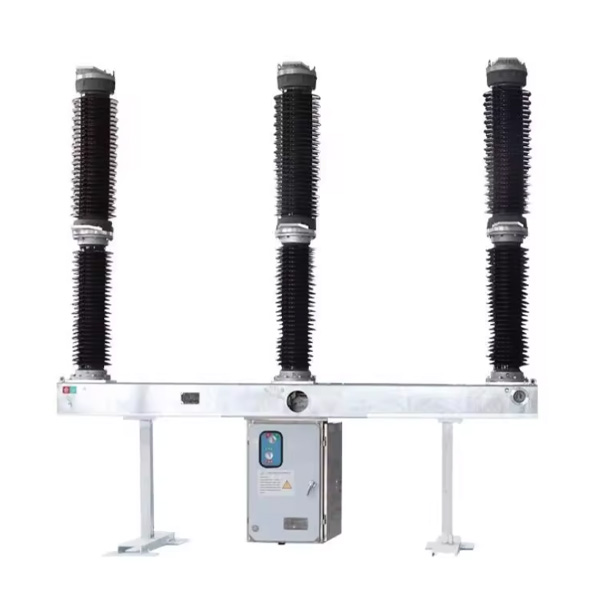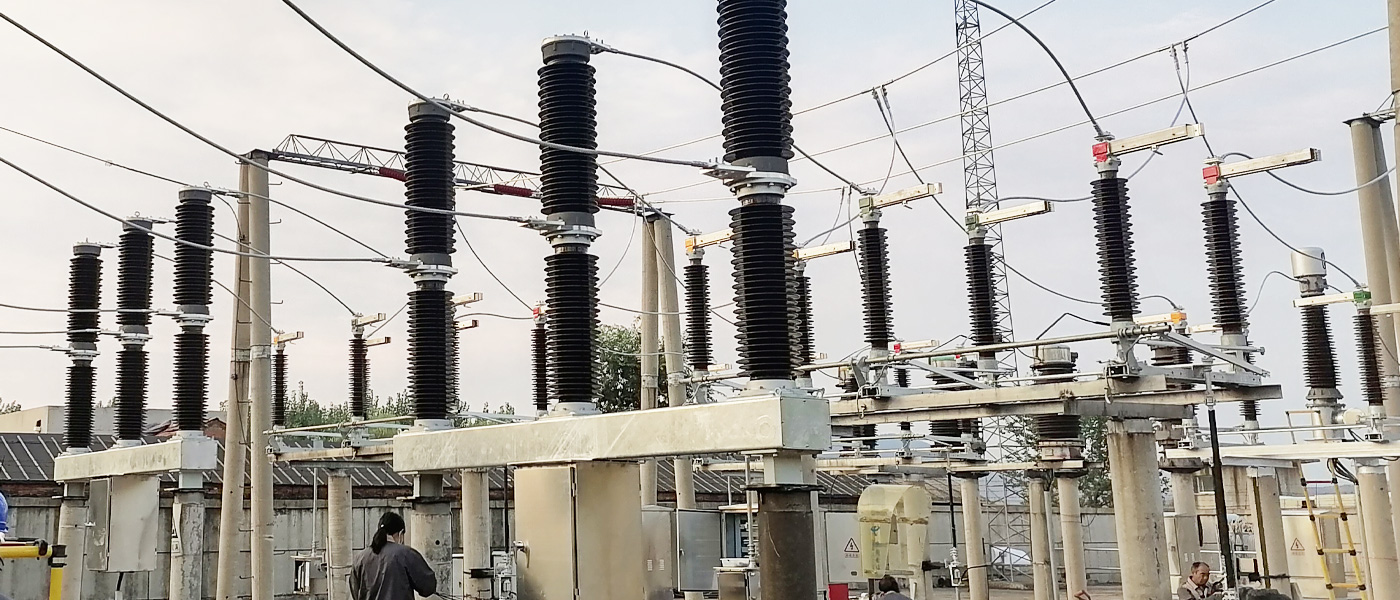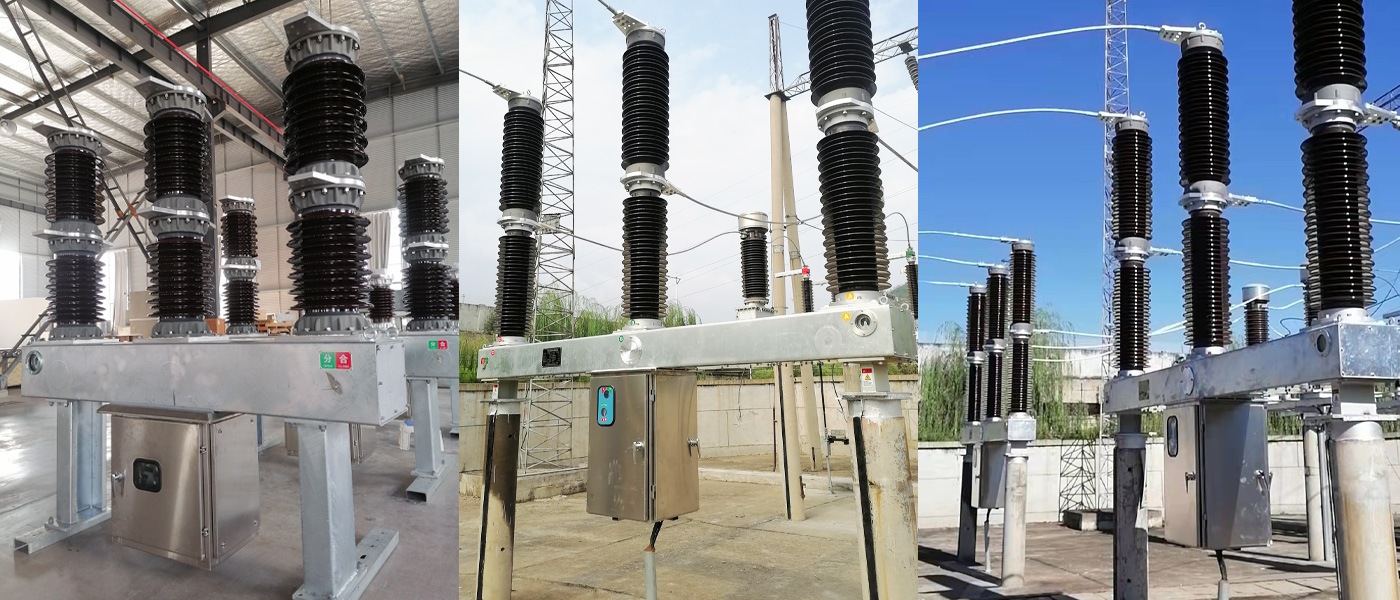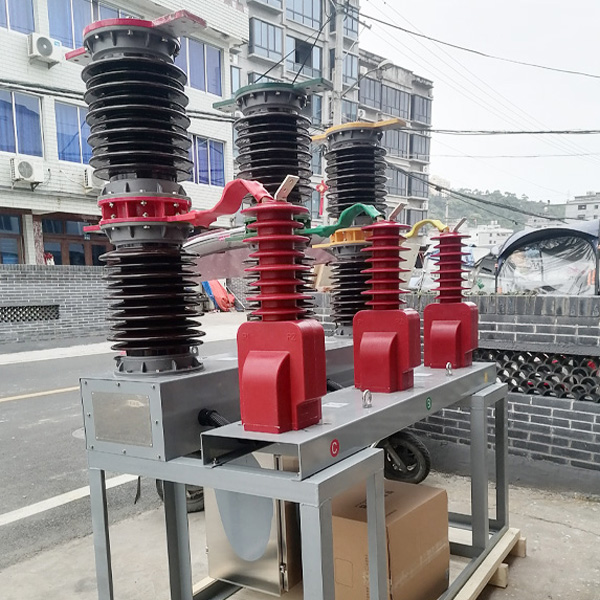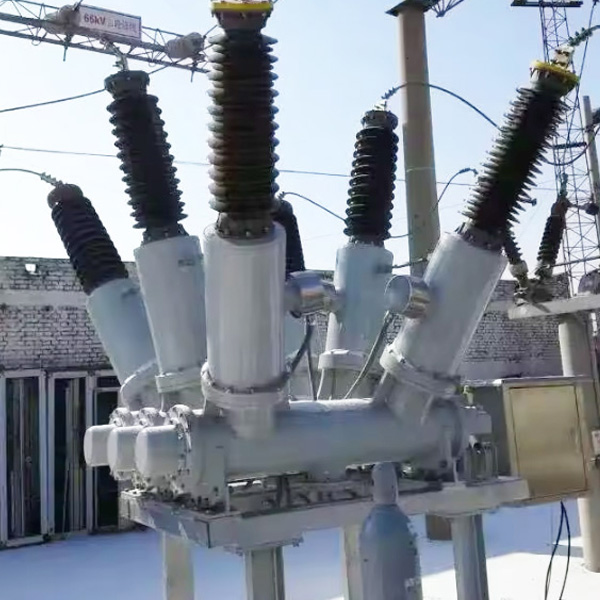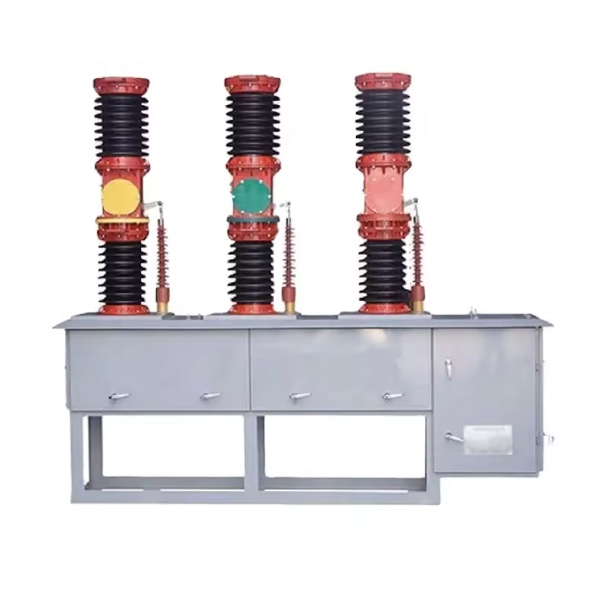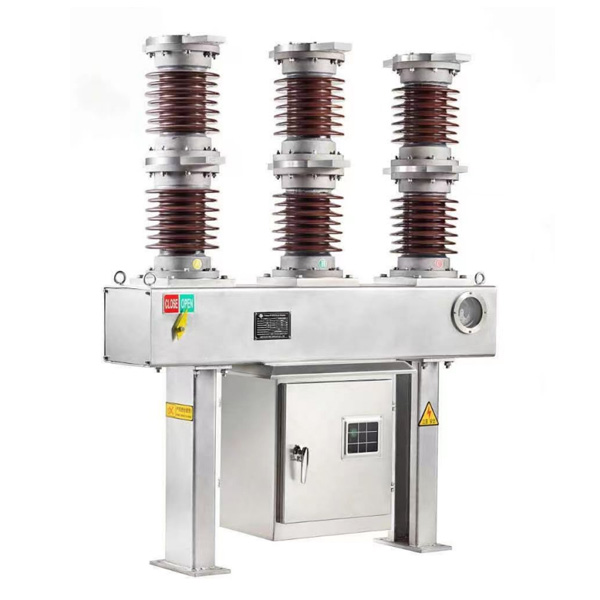126KV Outdoor high-voltage SF6 ceramic column circuit breaker
126KV Outdoor high-voltage SF6 ceramic column circuit breaker is a high-voltage sulfur hexafluoride device used in outdoor electrical systems operating at 126kV. It is designed to manage and safeguard power transmission and transformation networks. This breaker can serve as a switch and disconnection unit when needed. The breaker's innovative arc extinguishing technique involves thermal expansion and auxiliary blowing, and it incorporates a CTB-1 operating mechanism. It complies with the GB1984-2003 standard for AC High Voltage Circuit Breakers and ful specifications of the IEC62271-100:2001 standard for High Voltage Switchgear and Control Equipment Part 100: High Voltage AC Circuit Breakers established by the International Electrotechnical Commission.
Model:LW36-126/3150-40
Send Inquiry
Installation Site
Workshop

Product show
package
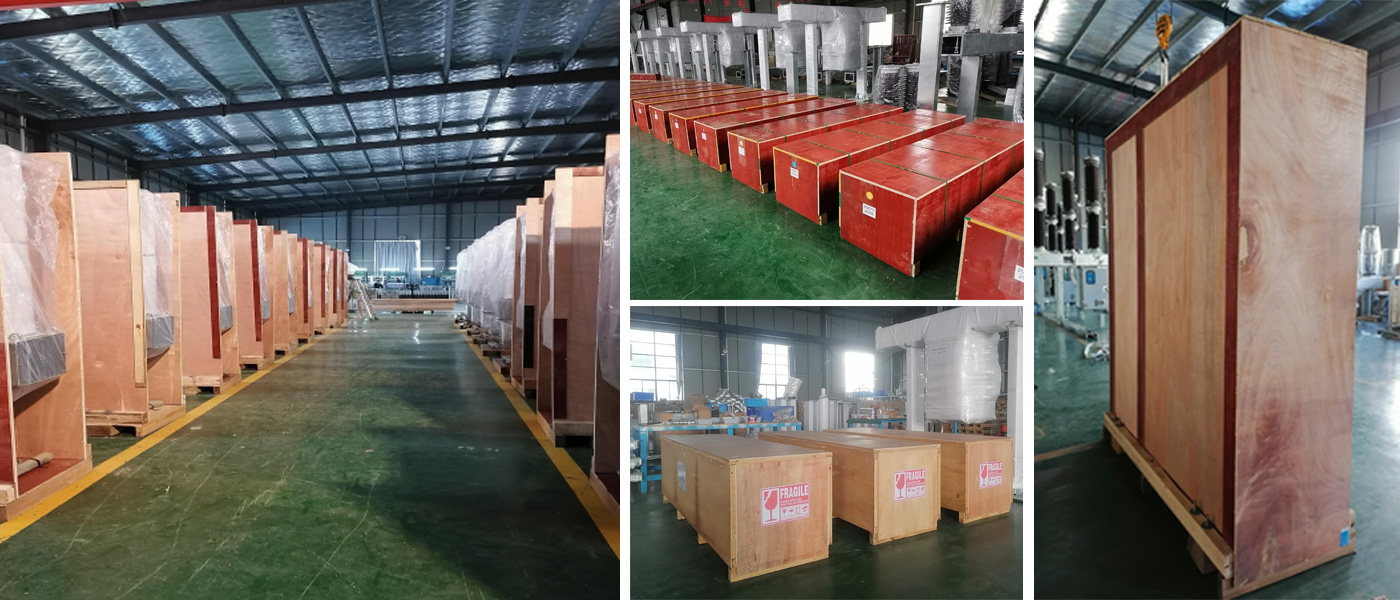
Overview
The LW36-126 outdoor high-voltage sulfur hexafluoride circuit breaker is a three-phase AC 50Hz outdoor electrical switching device designed to control and protect 126kV power transmission and transformation systems and can also function as a switch and disconnecting unit.
This circuit breaker utilizes an intelligent arc extinguishing method combining thermal expansion and auxiliary blowing and features a CTB-1 operating mechanism.
The device conforms to the GB1984-2003 standard for "AC High Voltage Circuit Breakers" and meets the requirements outlined in the IEC62271-100:2001 standard for "High Voltage Switchgear and Control Equipment Part 100: High Voltage AC Circuit Breakers" set by the International Electrotechnical Commission.

The main features of the circuit breaker:
The circuit breaker adopts the self-energy arc extinguishing principle, and has excellent breaking performance; short arcing time, long electric life and low operation noise. SF6 gas with excellent insulation and arc extinguishing performance is used as the dielectric arc extinguishing medium. It has no danger of burning or explosion and can be used in densely populated areas. The circuit breaker is equipped with a spring operating mechanism, which is simple and compact in structure, safe and reliable.
Environmental conditions
Ambient temperature -30'C*+40'C(special requirements -40 'C*+40C)
Above sea level <4500m
Air humidity:
Relative temperature: daily average is not more than 95%
The monthly average is no more than 90% (25 C)
Saturated vapor pressure: daily average is not more than 2.2X 10 MPa
The monthly average is not more than 1.8X 10 MPa
Wind pressure is not more than 700P
Wind pressure is not more than 700P
Ice thickness 10mm
Earthquake intensity: Horizontal acceleration: <0.3g, Vertical acceleration: <0.15g
Irradiance: 0.1W/cm3(At a wind speed of 0.5 m/s)
Maximum daily temperature difference:25 ℃
Nominal creepage distance: 31mm/kV
No flammable explosion hazard, chemical corrosion, severe vibration
Main technical parameters
Main technical parameters of the circuit breaker :

Mechanical parameters of circuit breaker and operating mechanism
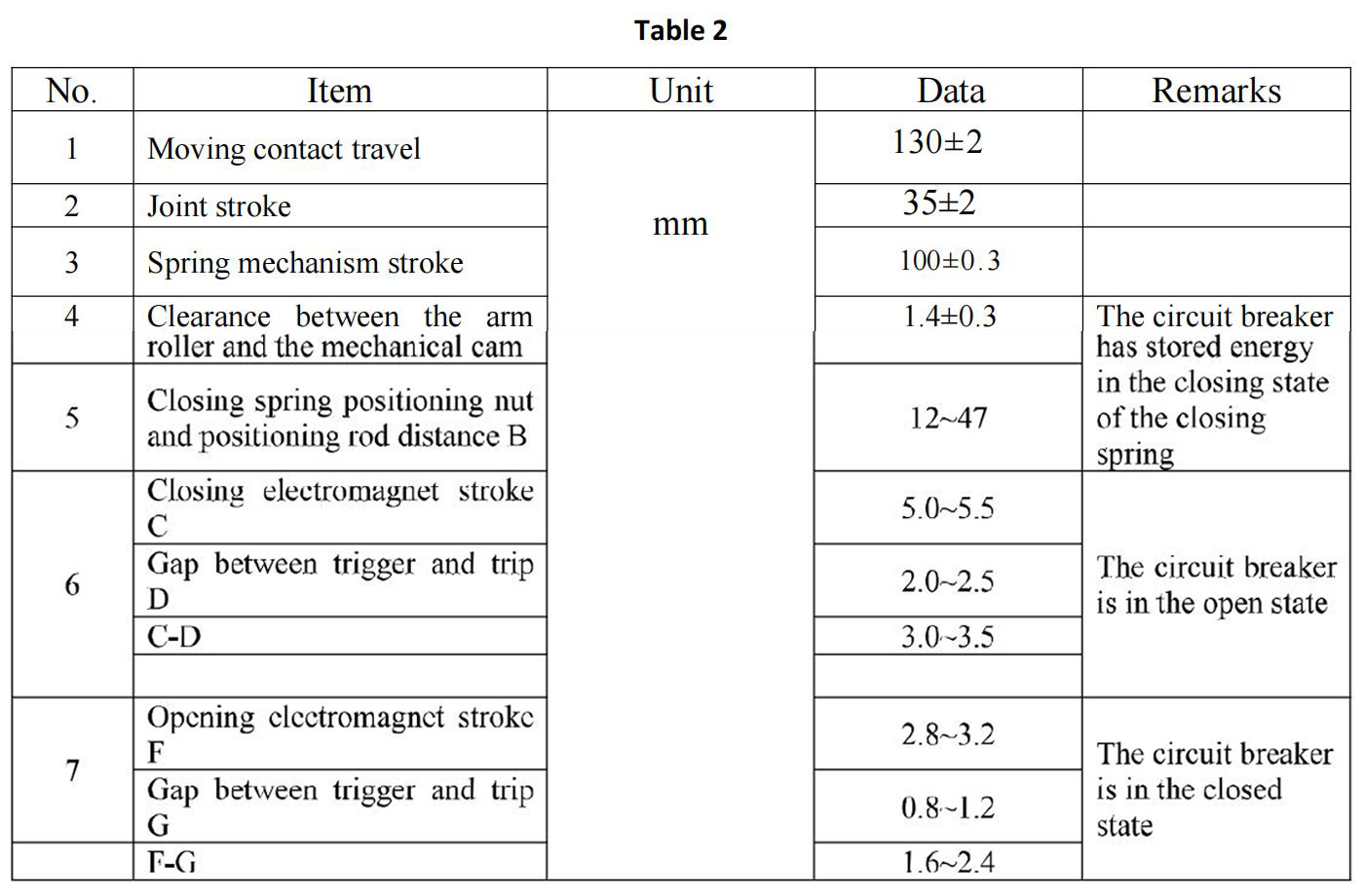
Control loop and auxiliary loop parameters
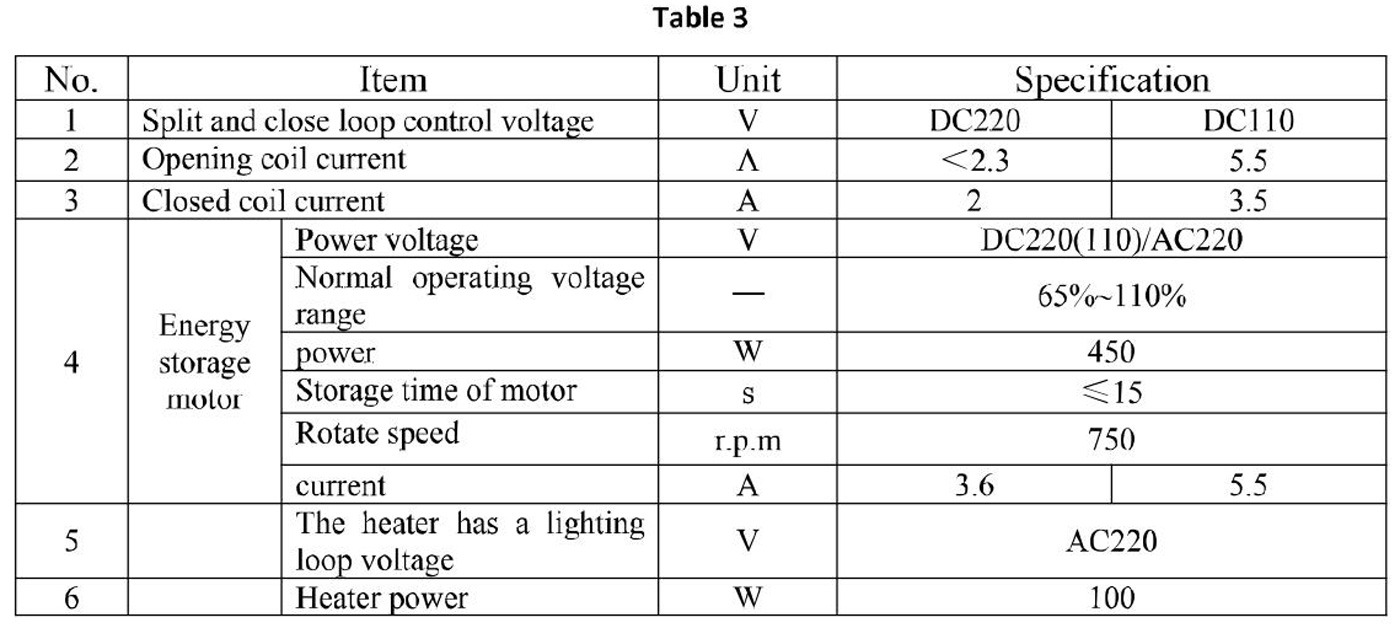
SF6 Gas pressure parameter

Product structure and principle
The overal structure of the product adopts self-energy arc extinguishing chamber, and each single pole single fracture is referred to as pole. Each circuit breaker consists of three poles. The three poles are mounted on the same frame and operated by a spring mechanism with mechanical linkage between the three poles. The upper part of the product is the arc-extinguishing porcelain sleeve, the middle is the pillar porcelain sleeve and the frame, and the mechanism box is centrally hoisted in the lower part of the frame. The mechanism box is equipped with a spring operating mechanism and an electric control part, and the output pull rod of the mechanism is connected with the B arm. . The SF6 gas density controller is mounted on the front of the frame with the ends of the frame supported by the struts.
The control principle is divided into two schemes: single trip gate and double trip gate. Annex Il: Electrical Control Schematic and Annex IV: The secondary wiring diagram is based on a double-brake circuit for reference. Specifically, the engineering technology agreement shall prevail, and the corresponding electrical control schematic diagram and secondary wiring diagram shall be provided at random.
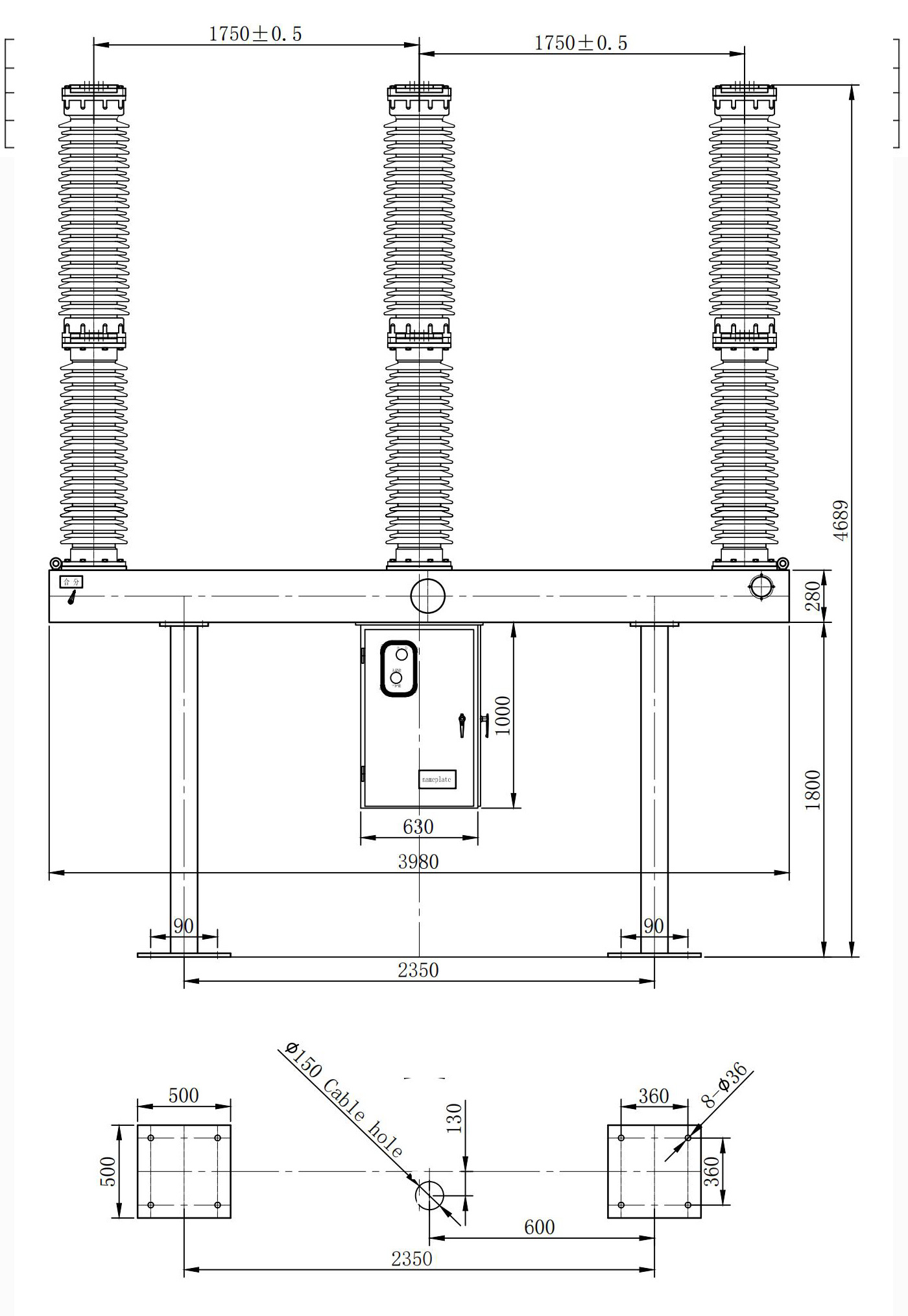
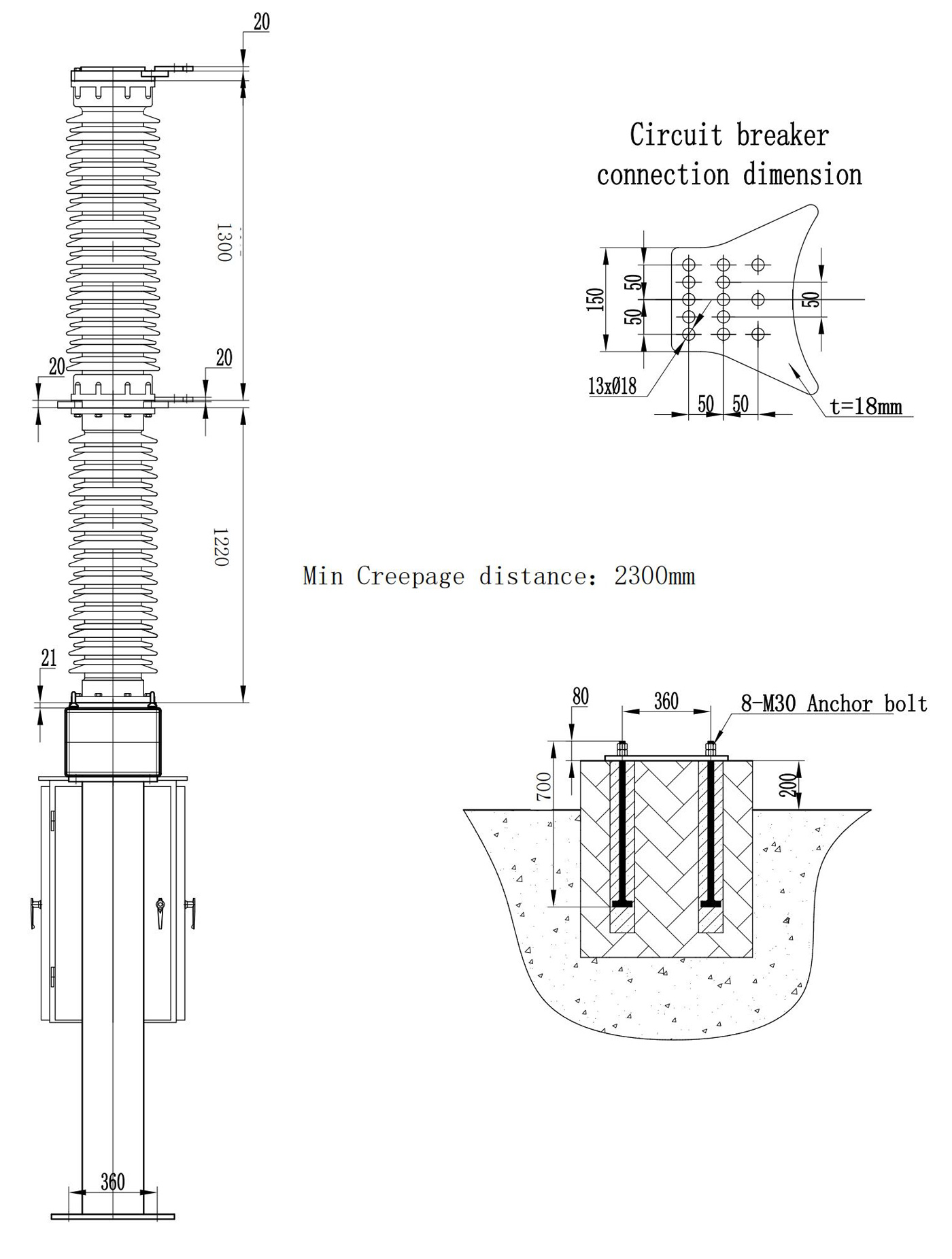
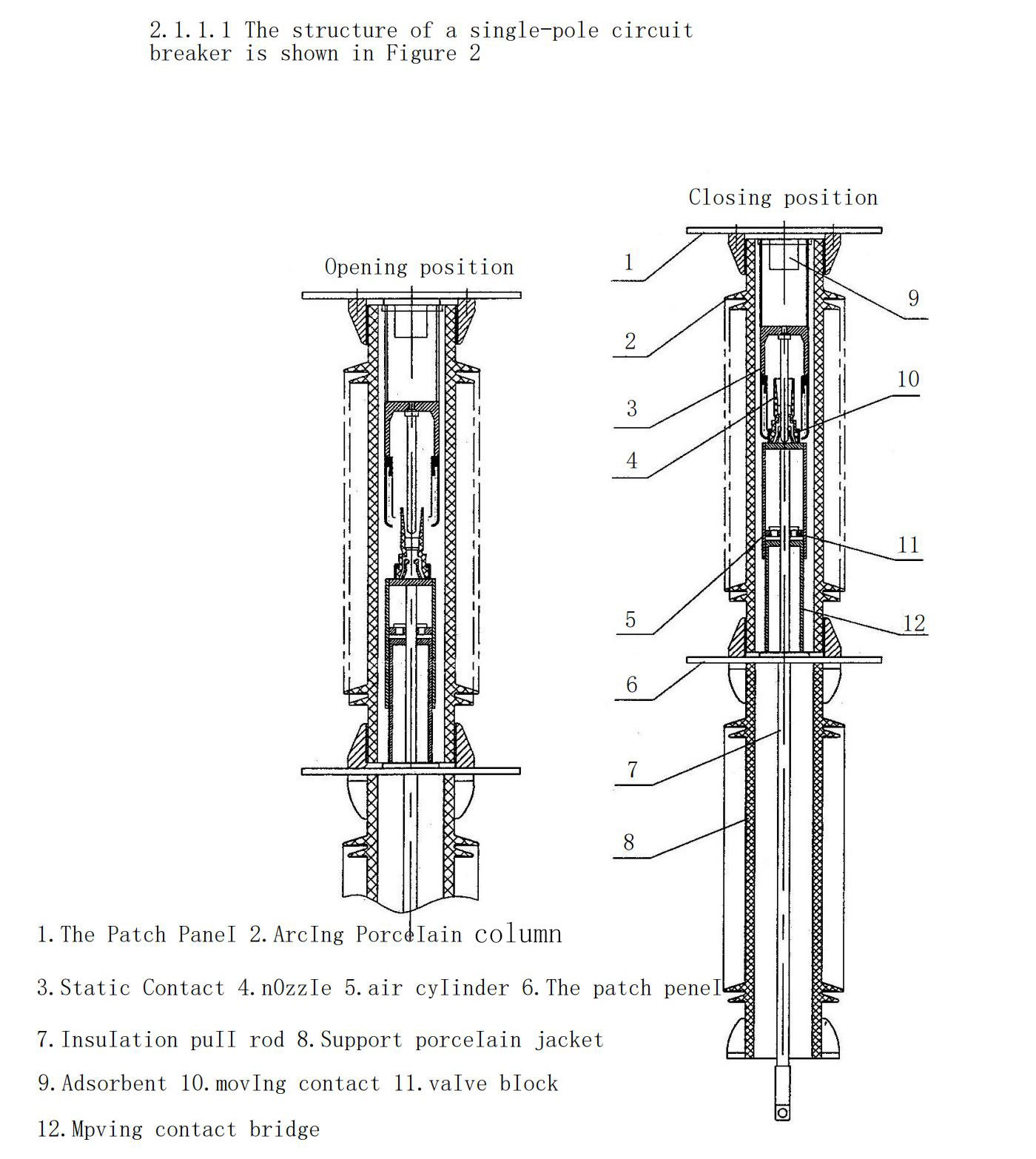
Working principle of spring operating mechanism
The opening operation is show on n in Figure 6-(A).
The spring mechanism is in the closing position and the opening spring 10 and the closing spring 11 have been stored. The arm 19 and 21 are subjected to a counterclockwise moment of the trip spring 10, which is blocked by the trip holding pawl 18 and the trip release 17.
The opening operation steps are as follows:
a. After the opening coil 16 receives the opening signal, the iron core acts to strike the opening release 17;
b. The opening release 17 rotates clockwise, releasing the opening to hold the dice 18;
c. Opening the dice 18 clockwise rotation, release pin A;
d. The arm 19 and 20 are rotated by the thrust of the trip spring 10 in a counterclockwise direction;
e. The arm 21 passes through the connecting rod 8 of FIG. 4 and other transmission elements connected thereto, so that the arc-moving chamber moving and static contacts are quickly separated, and the circuit breaker is opened.
Closing operation is shown in Figure 6-(B).
The spring mechanism is in the opening position, the closing spring 11 has stored energy, and the ratchet bearing is subjected to a counterclockwise moment of the closing spring 11 connected to the ratchet wheel 12, and the torque is closed by the closing holding latch 13 and the closing release 15.
The closing operation steps are as follows:
a. After the closing coil 14 receives the opening signal, the iron core acts to strike the closing release 15;
b.Closing trip unit 15 rotates clockwise,releasing the closing and holding the dice 13;
c. Closing keeps the dice 13 rotating counterclockwise, releasing the pin B;
d. The ratchet 12 rotates counterclockwise under the action of the closing spring 11, and simultaneously drives the ratchet shaft to rotate, so that the cam 22 pushes the arm 19 to rotate clockwise, and drives the arm 21 on the arm shaft to rotate clockwise. The compression opening spring 10 stores energy;
e. The arm 21 is quickly closed by the connecting rod 8 of Fig. 4 and other transmission elements connected thereto.
f. The state of the mechanism after the closing operation is completed is shown in Figure 6-(C), and the A pin is again locked to keep the latch 18 locked.
Spring-loaded spring energy storage
After the closing operation of the mechanism is completed, the closing spring 11 is in the released state 6-(C), and the pawl shaft is connected to the motor through the gear. After the circuit breaker is closed, the motor is immediately started to store energy for the closing spring.
The energy storage action of the closing spring is as follows:
a. The motor is started to rotate the pawl shaft;
b. The two pawls 20 on the eccentric pawl shaft alternately mesh with the teeth on the ratchet 12 in the transmission of the pawl shaft to rotate the ratchet;
c. The ratchet 12 rotates counterclockwise to drive the pull rod to store the closing spring 11;
d. After passing the dead point, the ratchet shaft is given a counterclockwise rotational moment by the closing spring 11l, and this torque is locked by the pin B being closed by the pin B.
e. Figure 6-(A) shows the state of the mechanism after the closing spring is stored.
Reclosing operation
Since the closing spring has stored energy when the circuit breaker is in the closing position, the circuit breaker can be operated with the 0-03S-CO reclosing operation.

Principle
a. Valves VA, VB, VC, VD should be in the open position under normal conditions to maintain consistent SF6 gas pressure in three-phase circuit breakers and densitometers.
b. The air supply port valve VF (or self-locking connector) should be in the closed position under normal circumstances. When the density of SF6 gas decreases and an alarm is issued,SF6 gas can be supplied by the air supply port,and it can be replenished by the air supply port under the live operation condition.
c. The SF6 gas density controller is a temperature-compensated electrical component. The rated pressure of SF6 gas at 20 C, the alarm pressure, and the blocking pressure are shown in Table 4. The SF6 gas temperature-force curve is shown in Figure 10. Now the pressure gauge is usually used. Density controller two-in-one density meter, do not need to consider the SF6 gas temperature -the characteristics of the force curve.
Control system
In the electric control system is located in the organization, including operating switch, automatic switch, trip switch, relay, terminals, closing coil, motor, ShiKong, heater main secondary elements, such as can realize switching control, brake and control, prevent jumping, closing spring energy storage to keep, motor control protection, SF6 gas pressure protection, heating, lighting, and other functions.
Control Principles and Wiring References Annex IIl: Electrical Control Schematic and Annex IV: Secondary Wiring Diagram
Acceptance, opening and storage
Acceptance: When the circuit breaker arrives at the destination, the user checks whether the actual moving goods are complete according to the packing list, and submits the acceptance report. If the parts are found to be damaged, the quantity does not match or other conditions, please contact our company.
Handling breakers and unpacking precautions are as follows:
a. All parts of the circuit breaker should be protected against moisture during loading and unloading.
b. Avoid violent impact when handling the circuit breaker.
c. Do not open any valves of the circuit breaker.
Installation and commissioning
Field installation flow chart
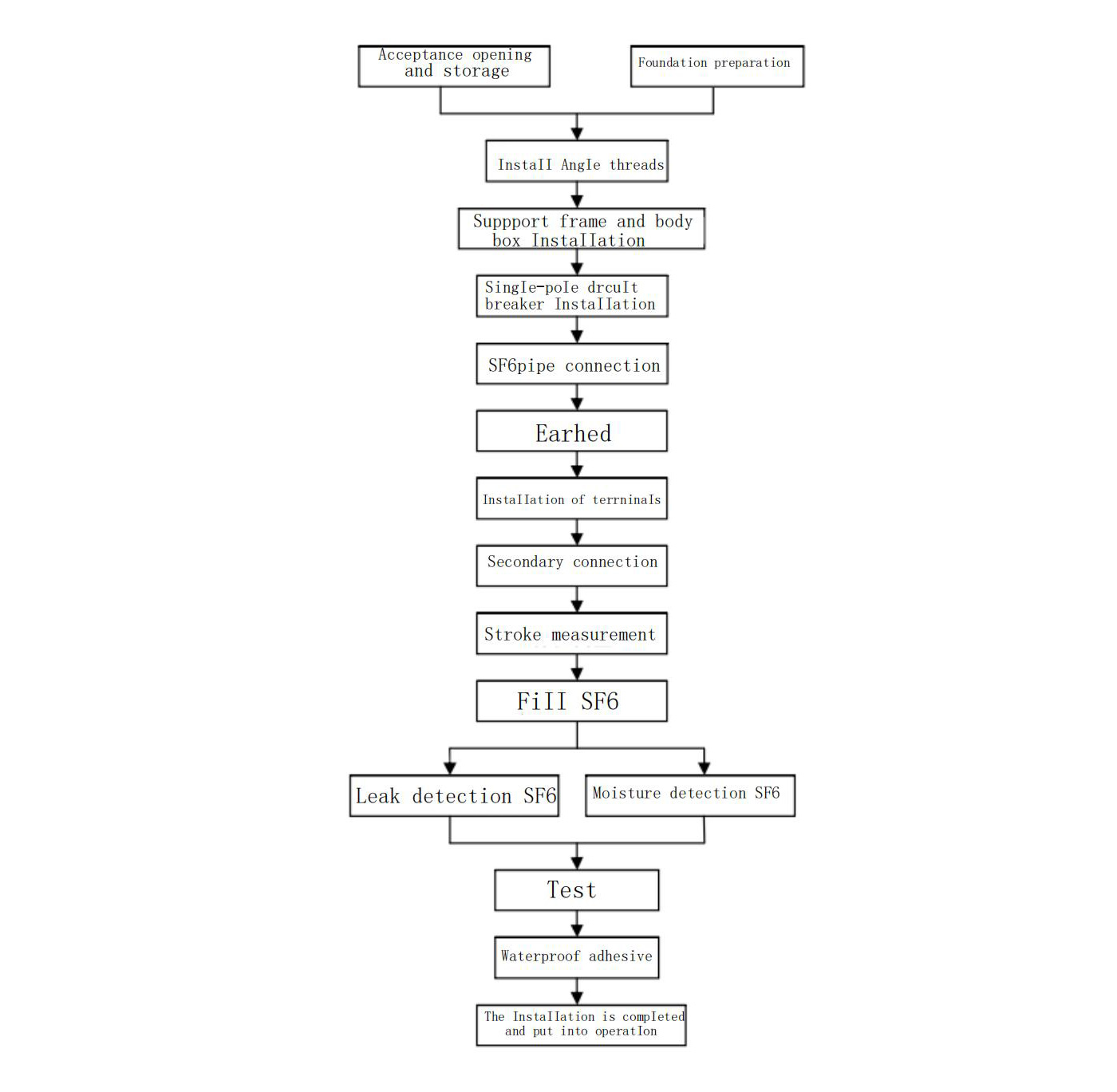
Instructions for ordering
When ordering the circuit breaker, the following should be noted
a. Type and mechanism type of circuit breaker
b. rated electrical parameters (voltage and current);
c. uses environmental conditions;
d. operation power type
e. primary terminal wiring direction;
f. spare parts, special tools, specialties, etc.name and quantity of equipment.
